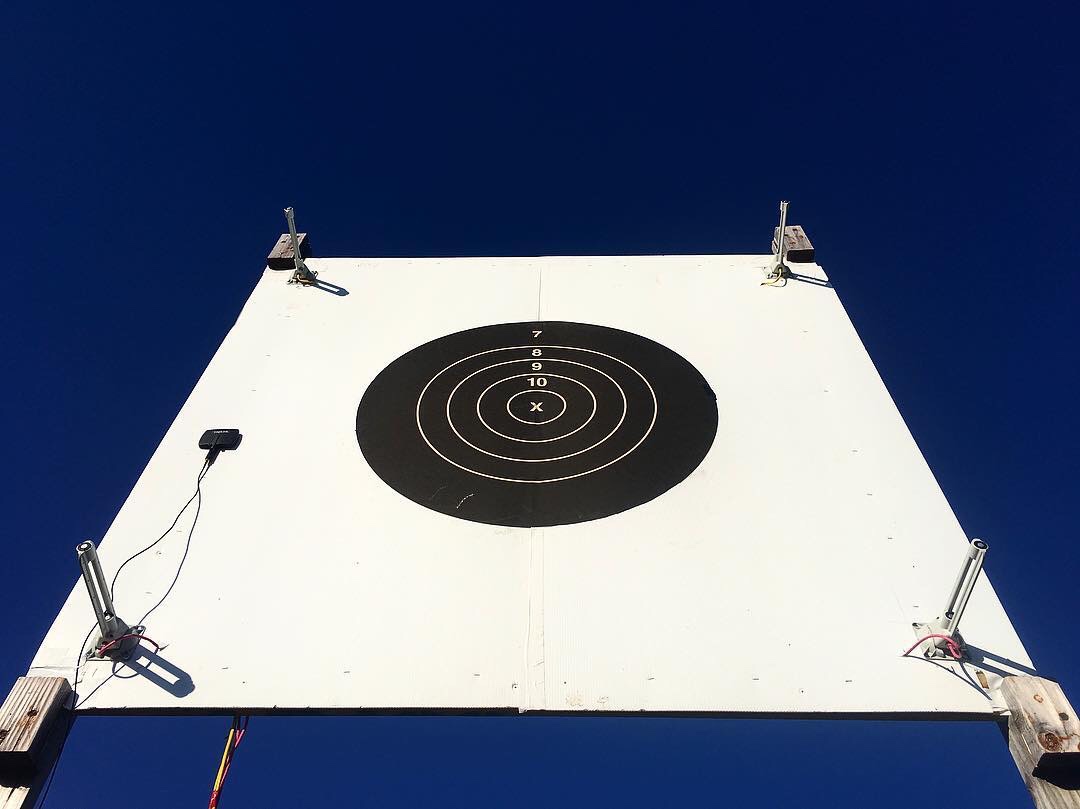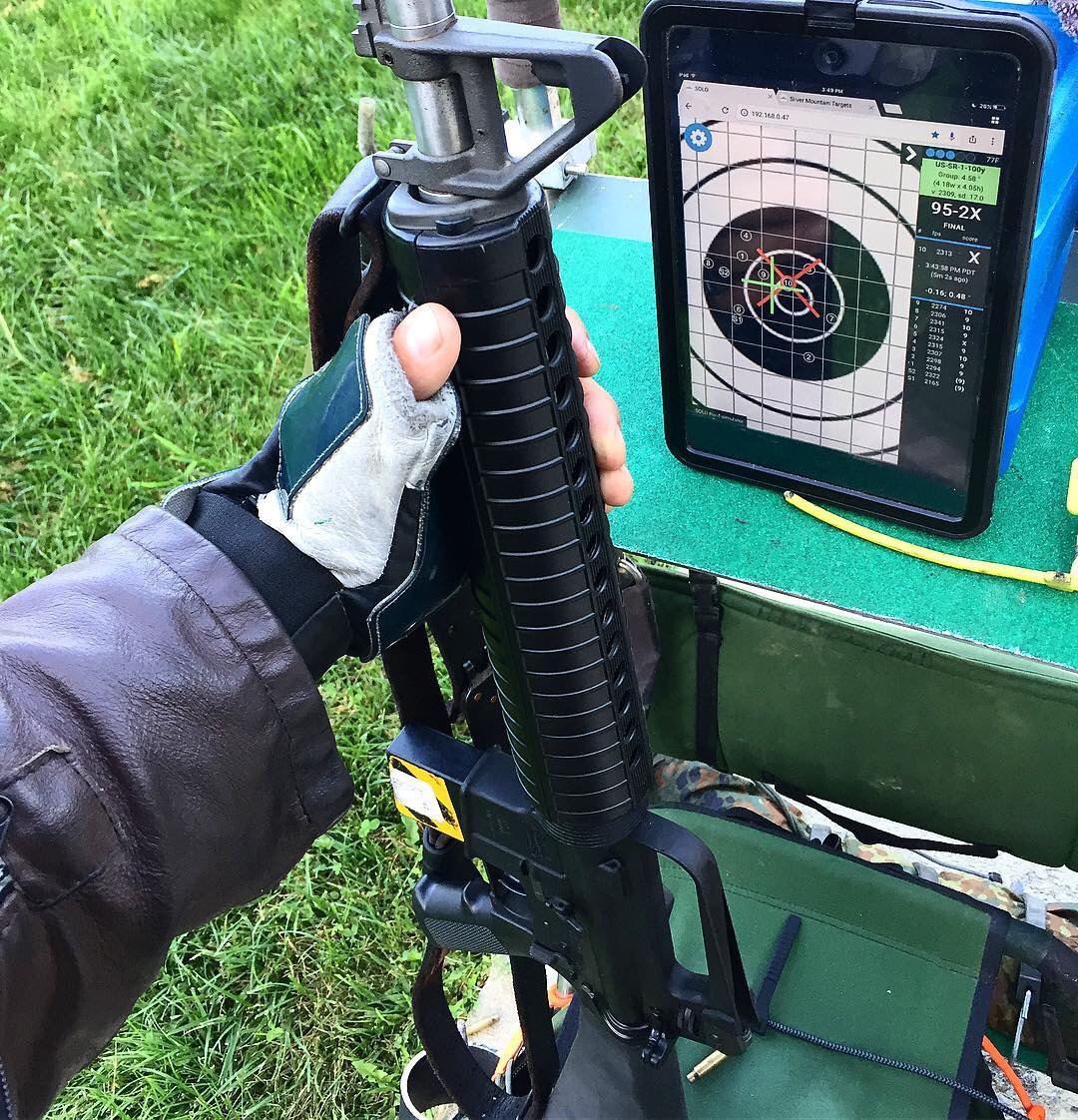Guest post submitted by Marty Dabney about his experiences at the NRA National Championships .
It’s no secret that High Power shooters are what most would call “salt of the earth” people. We will lend a helping hand, loan you gear and give you bad wind calls with the greatest of intentions. We are also traditionalist. We compete for the same trophies our grandparents competed for. The Daniel Boone, Nathan Hale and Alice Bull just to name a few. But no trophy is greater than the place where you go to win them, Camp Perry.
There is no doubt when you ask someone if they are going to “The Nationals”, they are really asking if they are going to Perry. This is the where thousands of shooter from all walks of life and skill level from all across the world come together once a year to partake in the tradition of staying in little white huts, cooking out, walking commercial row and occasionally compete in a rifle match. You can be a brand new shooter and by the grace of random squadding, end up shooting with past National Champions. It’s also a place of unpredictable weather, high winds and is prone to having a boat drift into the impact area and shut down the range. The Nationals have been held at Camp Perry long before anyone reading this was born. It seemed this would go on forever, but one day, it didn’t.
In 2017, the NRA made the decision to leave Camp Perry and move their National Championships to Camp Atterbury. It was no surprise that many shooters were upset about the move. How could they do this? What was the reasoning? Many people felt that all tradition was lost, but was it? The NRA still has the same trophies they’ve always had, the Wimbledon, the Sierra and the trophy that most intrigues me, the Erdman trophy. So why did competitors scoff at the idea of a change in venue? Because we are traditionalist. We now have to come to the realization that our Nationals won’t be held on hallowed ground, but some National Guard base in the middle of Indiana. When i think of Indiana, I think of Steers and ……corn, lots and lots of corn. Is this the end of our National Championship as we know it, or is this the beginning of something great?
On July 18th, 2017, I walked off the line of the NTI match as a newly Distinguished Rifleman. I had also earned 3 President 100 medals as well as various other State and Regional championships. The Service rifle treated me well so in good fashion and questionable judgment, I abandon the very rifle that treated me so well and switch to a match rifle, a stupid, stupid match rifle. I could now use an unlimited power optic, a lighter trigger, more adjustable stock and just about any caliber i wanted. The only issue is I now had to abandon Camp Perry and go to Camp Atterbury if I wanted to compete in a National Championship. So I packed up my gear and a suitcase that may or may not have had enough extra pants and headed west to Indiana.
After a short 9 hour ride, I pulled in the front gate. I was greeted by a guard who checked my license. Being an active training instillation, this was needed each time i entered the gates. I was staying on base so i checked in at the housing office and headed to my room. The rooms were very nice. We had our own individual rooms similar to a motel. They were furnished with a bed, microwave, mini refrigerator, full bathroom and air conditioning.
The following day, I met up with my team to compete in the 4 man team match. We had a break from the extreme heat and humidity that we had the prior week so we were already off to a good start. while hauling my gear to the 200 yard line, I noticed how well the range was maintained. The grass on the firing lines had been mowed, and for those who have competed on other Military bases, knows this can be hit or miss sometimes. One of the concerns from the year before was the number boards were too small. The NRA worked to correct this issue and installed larger boards. After my firing was complete, it was my turn to work the pits for the rest of the team. Another concern from the previous year were the target carriers were hard to operate. This issue had also been resolved as well. The carriers worked well. We finished up the team match in good time and I headed back to my room. The evening was spent sitting outside grilling with my friends that i hadn’t seen in a year. Hmm, this feels oddly familiar.
On Sunday morning, we made our way back down range for the first day of the 2400 Aggregate individual match. This is a four day match firing 60 shots per day. After the four days, the total scores are added up to determine an overall winner. Once I finished shooting, I made my way back to the pits. This is where we encountered several problems. There were communication issues, both with the portable speakers and with the radios that were used by the pit and firing line officials. This caused confusion with pit changes, alibis and the commands to start. Needless to say, this caused frustration but we made due.
On Tuesday, the heat had started to build . By mid day, it became apparent that this would be as much of an endurance match as it was a shooting match. Thankfully, Bartlein Barrels provided us with a good supply of Gatorade and water. None of us were too proud to turn it down. After we finished with the 600 yard slow fire match, we were provided with air conditioned vans to transport us to the pits. This gave a welcome relief if only for a short time. Once again, we experienced communication issues and at one point, range control put us in a “check fire”. This is where the National Guard stops us for various reasons like people in the impact area or incoming aircraft. This is a very active facility so it happens. It would almost be like having a boat go where it wasn’t supposed to and cause delays.
Wednesday and Thursday ran very well. The heat and humidity slowly made its way out and nicer weather took its place. The communication issues were addressed and we were off of the range by early afternoon.
The awards ceremony was held on Thursday evening at the Camp Atterbury conference center. I showered and threw on my cleanest dirty pants and headed over. Walking into the building gave a feel of walking into a large hunting lodge. It was a place that seemed worthy of a Championship awards ceremony. The NRA had the ceremony catered with chicken, barbeque and the works. We all fixed a plate and for the next hour, sat and watched as our friends were called up to receive their awards. Those same, time honored awards that were given at Camp Perry.
The final evening was spent sitting outside our rooms congratulating our friends who did well, giving a hard time to those who didn’t, but laughing the entire time. Right before we turned in for the evening, a sort of sad silence came over our group. Our time together had come to an end. For many of us, we knew we wouldn’t see each other for another year, possibly ever. Sometimes life gets in the way and we move on from things that we once held dear. Priorities change and in the worse case, we lose someone forever. In that moment, we weren’t worried about where the Nationals were going to be held. We all left with a smile thinking about doing it all over next year.
So, another National Championship is in the books. Was this the “Perry experience” that we’ve grown accustomed to? Maybe not, but could this be the start of a new tradition? Definitely, but it’s up to us to support it. I plan on returning in 2019 to give the Erdman another go and I encourage anyone on the fence to give it a chance. We have the opportunity to make it something great for our future generation.
Some notable accomplishments –
SFC Brandon Greene overall winner 2394-147X
SGT Ben Cleland overall Service rifle winner 2386-128X. SGT Cleland also won the Erdman trophy with an impressive 599-28X only dropping 1 point on his last day.
Konrad Powers overall civilian Service Rifle winner 2372-109X
SSG Amanda Elsenboss high woman 2382-113X
Hugo Adelson high senior 2362-100X
Marty Dabney fired 10 9’s in offhand and didn’t win the Erdman
Editors note: Marty’s views on Camp Atterberry may not reflect those of “Garand Thumb Blog” who is still a little grumpy about the split but prefers NRA format matches.






















